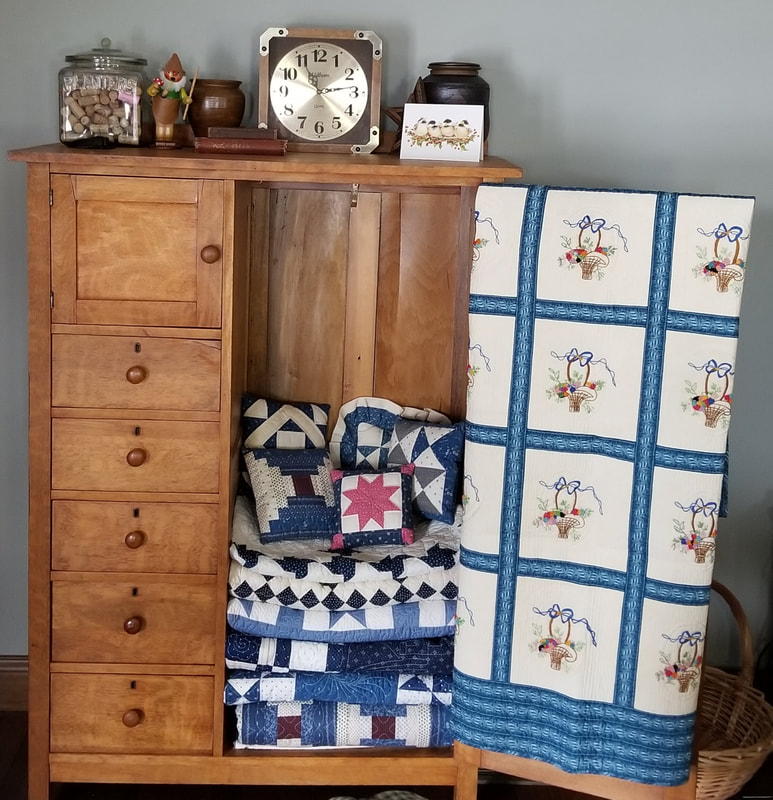There are many good reasons to consider collecting antique quilts. For years, people have known the comfort and beauty of displaying quilts in their home. Simple scrappy quilts can add charm to an antique or country-style decorating scheme. For others, quilts are a trendy decorator item, displayed on the wall as any other piece of fine art would be. Antique quilts come in a great variety of patterns and colors; with a little searching, you should be able to find one to suit your style.
Quilts also have value beyond simple decoration. Quilting instructors often have a collection of antique quilts for their own study and for examples to be used in the teaching of others. The patterns and techniques used in the last century can often inspire new work being done today. Collectors and dealers buy quilts for the investment potential that they hold. I have used this rationale a few times during the purchase of a more expensive piece, but my husband reminds me that it is only an investment if you sell it again.
A good place to begin looking for quilts may be right at home. Many people find that quilt collections begin quite innocently with quilts given to them by family or friends. Perhaps your relatives have quilts that have come down through the family. Has someone expressed an interest in caring for these pieces? Volunteer to document their history, have them appraised and store them in a safe place. Let friends know that you are interested. As surprising as it may seem, many people are not interested in old quilts and quite often they are willing to give them to someone who will care for them and enjoy them.
Some people begin a collection by acquiring quilts as they come along, with no particular plan. Garage sales, flea markets and auctions are sometimes a good source for finding old quilts. If you have the time to spend, and are interested in a variety of styles, you may begin or add to a collection in this way.
If you are a more serious collector, your quilts may have a specific focus; perhaps you are in love with red and green applique, scrappy turn of the century darks, or the light and airy look of the 1920's pastels. Antique dealers, especially those dealing in antique quilts, can be the best source of quilts for those collectors interested in specific styles. The price will be higher, but you may be able to find just what you want.
Prices for antique quilts have risen and fallen over the years. Study the market so you will know what you are looking at. Condition is probably the most important factor in determining the value of a quilt. Quilt appraisers figure the monetary value of a quilt based on its condition and known history. Good advice is to buy the best that you can afford. For many collectors, sentiment can also play a big part in the importance of a quilt. Buy what you like. As your collection grows you may decide to skip the purchase of several of lesser price in order to buy a more expensive one. Another idea is to trade up; sell off several of the less valuable pieces and use the money to purchase that really special piece.
If you are interested in collecting quilts, the first step is to start looking. Whatever your interests, you will be able to find quilts that will fit your budget, fill your needs, and satisfy your soul.

 RSS Feed
RSS Feed